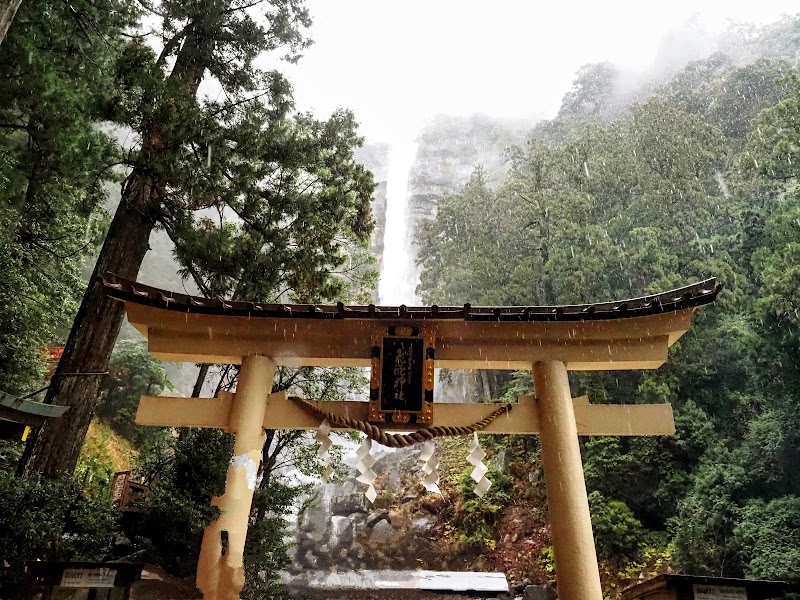Chasing the Spirit of Nachi Waterfall After the Kumano Kodo Pilgrimage
Nachi Waterfall offers more than a breathtaking endpoint; it’s the living pulse of the mountain after a spiritual Kumano Kodo pilgrimage. Discover the practical paths, terrain details, and essential tips to prepare for this unforgettable encounter with nature’s raw grandeur.
Wear Sturdy Footwear
The trail to Nachi Waterfall includes stone steps and slippery patches; shoes with good grip will keep you safe through sudden terrain changes.
Stay Hydrated
Carry at least one liter of water for your hike as there are limited refill points near the falls.
Visit Early or Late
Plan your visit outside of peak hours to enjoy quieter surroundings and better light for photography.
Respect Local Customs
Nachi Waterfall and Seiganto-ji Temple are sacred sites—maintain a low noise level and follow posted guidance to preserve their spiritual atmosphere.
Chasing the Spirit of Nachi Waterfall After the Kumano Kodo Pilgrimage
Standing at the edge of a journey that began deep within the ancient forests of the Kumano Kodo trail, arriving at Nachi Waterfall feels like meeting a force that has long been aware of your arrival. This 133-meter cascade isn’t just a spectacle; it is a powerful, fiercely alive presence that commands respect.
The road from the Kumano Kodo pilgrimage to Nachi Waterfall is a natural progression—a physical and spiritual continuation. The final hike to the falls covers approximately 1.8 kilometers from the nearest trail exit, with an elevation gain of about 120 meters. The path winds through dense cedar groves whose weathered trunks lean forward, as if eager to share stories whispered by the mountain breeze.
The terrain is uneven but manageable: paved stone steps punctuate earth and gravel stretches, guiding you upwards without overwhelming. Water trickles from hidden sources, daring you to test your footing on slick spots. Early morning or late afternoon treks reveal the waterfall in shifting light—mist rising in fine veils, the roar of water like distant thunder pushing you onward.
Preparation here is as essential as reverence. Good hiking shoes with solid grip will keep you steady on slippery patches. Hydration is key—there are limited facilities along the ascent, so carry at least one liter of water. Timing your visit outside peak midday hours not only enhances your experience but respects the serene environment where many come for reflection.
Beyond the falls, the nearby Seiganto-ji Temple stands quietly, a reminder of the sacred path’s long history. The temple’s red pagoda framing the waterfall is an iconic sight that captures the delicate balance between nature’s raw power and human devotion.
Visiting Nachi Waterfall after the Kumano Kodo pilgrimage blends physical challenge with spiritual reward. It’s a moment where you step into the pulse of the mountain’s heartbeat and walk alongside the centuries of pilgrims who have done the same. Each footfall on the trail is a conversation with the land—a dialogue between your perseverance and a waterfall that remains fiercely itself.
For those ready to take on the journey, the experience is unforgettable: not just for the destination, but for the river, forest, and stone that shape every step along the way.
Nearby Trips
All Adventures
Boat Charters
Water Activities
Adventures near Wakayama
Discover the unique and memorable adventures that make Wakayama special.
Frequently Asked Questions
How far is Nachi Waterfall from the end of the Kumano Kodo trail?
From the nearest Kumano Kodo trail exit point, the hike to Nachi Waterfall is about 1.8 kilometers with an elevation gain around 120 meters. The path is a steady climb that takes roughly 45 to 60 minutes depending on pace.
Is the hike to Nachi Waterfall suitable for beginners?
The hike is moderate in difficulty—most beginners with a reasonable level of fitness can complete it. The terrain includes stone steps and uneven ground but requires no advanced technical skills.
What facilities are available near Nachi Waterfall?
Near the waterfall and Seiganto-ji Temple, you will find restrooms and small shops. However, on the trail itself, there are limited facilities, so prepare ahead with water and snacks.
Can I photograph Nachi Waterfall during the hike?
Yes. Early morning and late afternoon light soften the falls and mist, creating ideal photography conditions. The red pagoda near the temple offers a classic vantage point combining cultural architecture and nature.
Are there any cultural considerations when visiting Nachi Waterfall?
Nachi Waterfall is part of a sacred pilgrimage route and is closely tied to Shinto and Buddhist traditions. Visitors are advised to maintain silence, avoid littering, and follow any posted signs respecting worship practices.
What wildlife might I encounter along the trail?
The forest is home to native birds such as Japanese pygmy woodpeckers and varied small mammals. Keep an eye on the trail edges but avoid feeding or disturbing wildlife.
Recommended Gear
Hiking Boots
Supportive, waterproof boots with good traction help navigate slippery moss-covered stones and steep stairs.
Water Bottle
Staying hydrated is critical, especially in humid summer conditions lacking refill points on the way.
Rain Jacket
Spring rains can catch hikers off guard; a packable rain jacket keeps you dry without adding weight.
Trekking Poles
Poles provide extra balance on icy or uneven ground, offering greater safety during winter visits.
Local Insights
Hidden Gems
- "Viewpoint at Daimonzaka slope offers an unobstructed perspective of the waterfall framed by cedar trees."
- "Small shrine dedicated to mountain spirits near the base of the temple—often overlooked."
Wildlife
- "Japanese macaques occasionally spotted around river crossings."
- "Birdwatchers may find rare sightings of copper pheasants in the thick forest."
History
"Nachi Waterfall has been a sacred site for over a thousand years, integral to Kumano faith with pilgrims revering its purifying waters before entering temple grounds."

